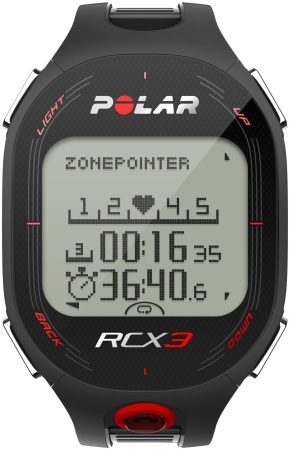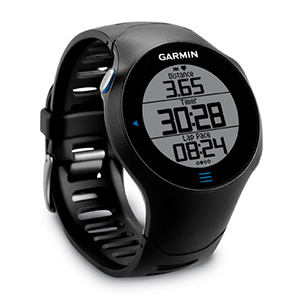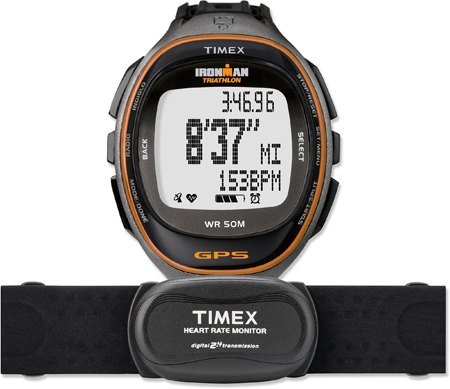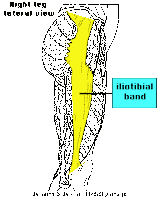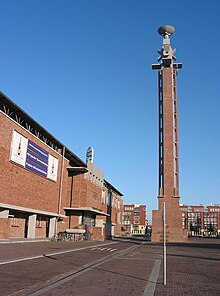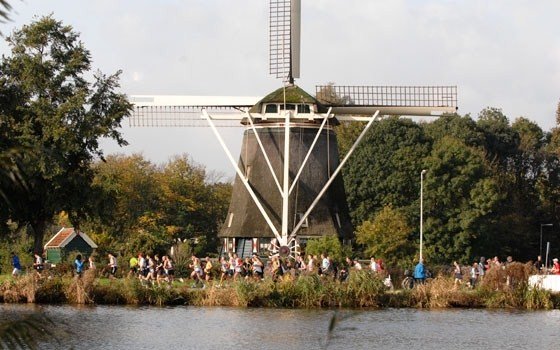No running allowed on the route of the 10, 15, 25 and 40 kilometre. Would not be possible anyway with over 30.000 people taking part. No need as I run on a regular basis in Oosterbeek and the surrounding area.
I can only recall one run associated with the Airborne theme. This charity run was to collect money for veterans (I think Lest we forget). It was a run to accompany the participant of the London Marathon that ran home after the marathon in a relay race. The last leg was from Arnhem to Oosterbeek in the company of other runner all dressed in a white shirt with the Pegasus emblem. I still have the shirt as it is a souvenir from the run that became the start of my 'running career.
I have made a route on runkeeper named 'Battlefield Run: Oosterbeek / Arnhem 1944'. It is a route of 30+ kilometres. The ideal 'long slow duration training preparation for one of the many marathon organised this fall across Europe. The is mainly on bicycle paths/smaller road with some unpaved stretches.
For anyone who wants to run/train in the surrounding of Oostbeek in this history environment this route can serve you as inspiration. Maybe this 30+ route is a bit ambitious so maybe I will post a shorter route later on. Now I will describe the route and link it to the history of September 1944. I will suggest some shortcuts in the meantime.
Like to run with someone who is familiar with the route. Leave a comment to contact me and who knows, maybe we can run (a part of) the route together!
The Battle of Arnhem
A very brief introduction: In an attempt to end the war before Christmas the Allies came up with a plan to cross the rivers in the Netherlands to open up the route to Berlin over the plains of northern Germany. The plan was code-named: Market Garden.In order to catch the bridges over the rivers undamaged paratroopers were dropped along the route.
The drop zones for the troops that were to seize the bridge at Arnhem were over 10K tot the west of the town.
Only a part of the British para's under the command of John Frost succeed to reach the bridge and captured the north side and managed to keep it for four days. The majority ended up in the so called perimeter in Oosterbeek were they held out for ten days before retreating across the river Rhine under cover of the night.This made Oosterbeek a battlefield for ten days.
Driel on the south bank of the river became battlefield as the Polish para's were dropped in support of the British in Oosterbeek. The heavy equipment of the Poles was flown in before with Gliders but to the north bank.
This route will take you to the landing and drop zones, trough Oosterbeek and into Arnhem and the BRidge. You'll loop back to Oosterbeek and one of the last points of interest is, quite fittingly the Airborne Cemetery.
Wanne learn more before you start your run (highly recommended) use google or Wikipedia, the very extensive site MarketGarden.com or visit the Airborne Museum. This will add to the experience of running in this beautiful and peaceful environment.
The route
The start of the route is at Hotel West End on 'de Amsterdamse weg'. This road was the northern route from the drop zones into Arnhem. Code-named Leopard Route.
Start your run heading west along the 'Amsterdamse weg'. Stay on the bicycle track on the left side )southside' of the road.
After 1K turn left into the ´Wolfhezerweg´. After some time you will see the first monument. An impressive 'Glider', landing to deliver the heavy equipment such as Jeeps or light artillery. You are now on the landing zone as it was used during 1944.
Continue along this road until your cross the rail road. Turn right directly after the crossing onto the bicycle path directly along the railroad.
App. after you see to your left that the woods make way for field. Cross the road and head onto the dirt track heading south on the edge of the wood and field.
The path bends right. Again you are on a landing zone for Gliders. Compare the satellite image of Runkeeper with the route with the areal photography from 1944.
App. after you see to your left that the woods make way for field. Cross the road and head onto the dirt track heading south on the edge of the wood and field.
The path bends right. Again you are on a landing zone for Gliders. Compare the satellite image of Runkeeper with the route with the areal photography from 1944.
| Runkeeper |
Continue on the path as it bend left and due south again. After a sharp bend to the right you can turn left heading between golf courts towards a sports field.
When you come to the clubhouse of the golf course turn left between the sport field and the parking lot. Continue straight ahead into the ´Ginkelseweg´. You have covered some 7K.
From this area the second battalion of John Frost headed towards the bridge on the southern 'Lion' route. As far as possible we will follow this route for some time.
When you come to the clubhouse of the golf course turn left between the sport field and the parking lot. Continue straight ahead into the ´Ginkelseweg´. You have covered some 7K.
From this area the second battalion of John Frost headed towards the bridge on the southern 'Lion' route. As far as possible we will follow this route for some time.
Follow the Ginkelseweg untill you come to the Bennekomseweg.
Take the bicycle path to the right towards the major road (Utrechtseweg). Cross this road and turn left towards the bridge-flyover of the motorway.
You might consider to turn right on the Bennekomseweg for just a 100 meter or so to take a look at the Airborne Monument of the town of Heelsum. Continue the route afterwards on the Utrechtseweg.
After the bridge turn right into the Doorwertsestraat. At the T-junction turn left (still called Doorwertsestraat). After ~100 meter turn right into Roggekamp for the first real climb and decent in this route. At the bottom of the hill run trough the tunnel turn directly left up hill again. From here is is a long time straight ahead.
The first stretch is still the Roggekamp, after the cross roads it is the W.A. Scholtenlaan trough the woods, along a tennispark trough Doorwerth. Just past Doorwerth this road is called Oude Oosterbeekseweg. A senic road with to small parallel lanes (see image).
Stay on this road on your right you will see a restaurant (de Valkenier), Make yourself ready for a steep climb. after a bend in the road to the left you turn right onto a bicycle path.
Short of 100 meter you can turn right towards the Westerbouwing. Run on towards the restaurant and enjoy the view. The bridge in the distance is the railroad bridge. In september 1944 the Germans held this high ground preventing the Poles to cross the river using the ferry. You can see the town of Driel on the other side of the Rhine.
Run on over the parking lot back to the road and turn right, down hill towards the cross roads. Go straight ahead and after 50 meters take the small path between the fields towards the treeline. Agina after some 50 meters you will have the forrest to your left. In this forrest you can still find evidence of the rifle pits (Circles of sand between the fallen leaves) from the para's in order to fight of the Germans attacking the perimeter from the west. At the and of the field to your right turn right to follow the path untill you come to a asphalt paved road. Turn left up hill. At a T-junction turn left again en continue the climb uphill. This is the Hoofdlaan.
Continue straight ahead on theHoofdlaan untill you come to a major road. This is the Utrechtseweg were you turn right. Only to find the entrance to the Airborne Museum. The villa was a hotel during the battle and became the headquarter of the para's. Continue around the musum back to the Utrechtseweg which was the middle route towards the bridge; code named 'Tiger'.
Oposite of the museum is the Airborne Monument of which the construction started in September 1945, only a year after the battle. British soldiers who had fought at Oosterbeek the year before were present while they were evaluating the battle and filming Theirs Is The Glory. This film used soldaten and civilians to reenact the fighting amongst the ruins of Oosterbeek.
Follow Utrechtsweg to the cross road with traffic ligths. The painting depict this cross roads during the fighting. The house on the left of the image is clearly recognisable.
In the garden of the house called Quatre Bras is a modest monument for teh 21st Ind. Par. Coy. who defended this part of the so called perimeter.
The house on he right of the image is replaced by restaurant Schoonoord. The meeting place for veterans and their children and grandchildren on pilgrimage during the September commemoration.
Turn right in front of Schoonoord and after 100 meter left onto the Paasberg. In the garden of number 17 again a small monument in the shape of a flower vase. IN a small cellar underneath this house 13 civilians (including children) were taking refuge while the para's in the room overhead were fighting of the Germans..
At the end of the Paasberg continue straight ahead (Jagerskamp) and after a short descent continue straight ahead (technically it is left and immediately right, Weverstraat) for a couple of 100 and at a cross road turn left and again immediately right. This lower part of the Weverstraat is pictured on this black and white image. Showing the damage to the houses.
At he bottom of the Weverstraat you see, to your right, the Old Church. To the right of this church is a house that served as a dressing station. Kate ter Horst, who liverd there at the time was named 'Angel of Arnhem' by the wounded. In the film 'A Bridge to Far' her part was played by Liv Ullmann.
Turn left as we continue on the Lion Route towards Arnhem. We go straight for the bridge staying as close to the river as possible. We follow Benedendorpsweg that turns into Klingelbeekseweg once we pass underneath the railroad bridge. The bridge was damaged by the Germans. After 1,5km this road is named Hulkesteinseweg. At the end of this road turn right and continue on 'Onderlangs'. Just in front of the new you can enter the quayside and run directly along the river. You have just finish your half marathon, 21K. Run on the quayside towards the famous bridge.
This is where I finish the first part of of the description of the route. Part 2 is to follow soon. It takes you back towards the Saint Elisabeth Hospital, and to the Airborne Cemetery.
It will also suggest some short cuts.
Take the bicycle path to the right towards the major road (Utrechtseweg). Cross this road and turn left towards the bridge-flyover of the motorway.
You might consider to turn right on the Bennekomseweg for just a 100 meter or so to take a look at the Airborne Monument of the town of Heelsum. Continue the route afterwards on the Utrechtseweg.
After the bridge turn right into the Doorwertsestraat. At the T-junction turn left (still called Doorwertsestraat). After ~100 meter turn right into Roggekamp for the first real climb and decent in this route. At the bottom of the hill run trough the tunnel turn directly left up hill again. From here is is a long time straight ahead.
The first stretch is still the Roggekamp, after the cross roads it is the W.A. Scholtenlaan trough the woods, along a tennispark trough Doorwerth. Just past Doorwerth this road is called Oude Oosterbeekseweg. A senic road with to small parallel lanes (see image).
Stay on this road on your right you will see a restaurant (de Valkenier), Make yourself ready for a steep climb. after a bend in the road to the left you turn right onto a bicycle path.
Short of 100 meter you can turn right towards the Westerbouwing. Run on towards the restaurant and enjoy the view. The bridge in the distance is the railroad bridge. In september 1944 the Germans held this high ground preventing the Poles to cross the river using the ferry. You can see the town of Driel on the other side of the Rhine.
Run on over the parking lot back to the road and turn right, down hill towards the cross roads. Go straight ahead and after 50 meters take the small path between the fields towards the treeline. Agina after some 50 meters you will have the forrest to your left. In this forrest you can still find evidence of the rifle pits (Circles of sand between the fallen leaves) from the para's in order to fight of the Germans attacking the perimeter from the west. At the and of the field to your right turn right to follow the path untill you come to a asphalt paved road. Turn left up hill. At a T-junction turn left again en continue the climb uphill. This is the Hoofdlaan.
Continue straight ahead on theHoofdlaan untill you come to a major road. This is the Utrechtseweg were you turn right. Only to find the entrance to the Airborne Museum. The villa was a hotel during the battle and became the headquarter of the para's. Continue around the musum back to the Utrechtseweg which was the middle route towards the bridge; code named 'Tiger'.
Oposite of the museum is the Airborne Monument of which the construction started in September 1945, only a year after the battle. British soldiers who had fought at Oosterbeek the year before were present while they were evaluating the battle and filming Theirs Is The Glory. This film used soldaten and civilians to reenact the fighting amongst the ruins of Oosterbeek.
Follow Utrechtsweg to the cross road with traffic ligths. The painting depict this cross roads during the fighting. The house on the left of the image is clearly recognisable.
In the garden of the house called Quatre Bras is a modest monument for teh 21st Ind. Par. Coy. who defended this part of the so called perimeter.
The house on he right of the image is replaced by restaurant Schoonoord. The meeting place for veterans and their children and grandchildren on pilgrimage during the September commemoration.
Turn right in front of Schoonoord and after 100 meter left onto the Paasberg. In the garden of number 17 again a small monument in the shape of a flower vase. IN a small cellar underneath this house 13 civilians (including children) were taking refuge while the para's in the room overhead were fighting of the Germans..
At the end of the Paasberg continue straight ahead (Jagerskamp) and after a short descent continue straight ahead (technically it is left and immediately right, Weverstraat) for a couple of 100 and at a cross road turn left and again immediately right. This lower part of the Weverstraat is pictured on this black and white image. Showing the damage to the houses.
At he bottom of the Weverstraat you see, to your right, the Old Church. To the right of this church is a house that served as a dressing station. Kate ter Horst, who liverd there at the time was named 'Angel of Arnhem' by the wounded. In the film 'A Bridge to Far' her part was played by Liv Ullmann.
Turn left as we continue on the Lion Route towards Arnhem. We go straight for the bridge staying as close to the river as possible. We follow Benedendorpsweg that turns into Klingelbeekseweg once we pass underneath the railroad bridge. The bridge was damaged by the Germans. After 1,5km this road is named Hulkesteinseweg. At the end of this road turn right and continue on 'Onderlangs'. Just in front of the new you can enter the quayside and run directly along the river. You have just finish your half marathon, 21K. Run on the quayside towards the famous bridge.
This is where I finish the first part of of the description of the route. Part 2 is to follow soon. It takes you back towards the Saint Elisabeth Hospital, and to the Airborne Cemetery.
It will also suggest some short cuts.














